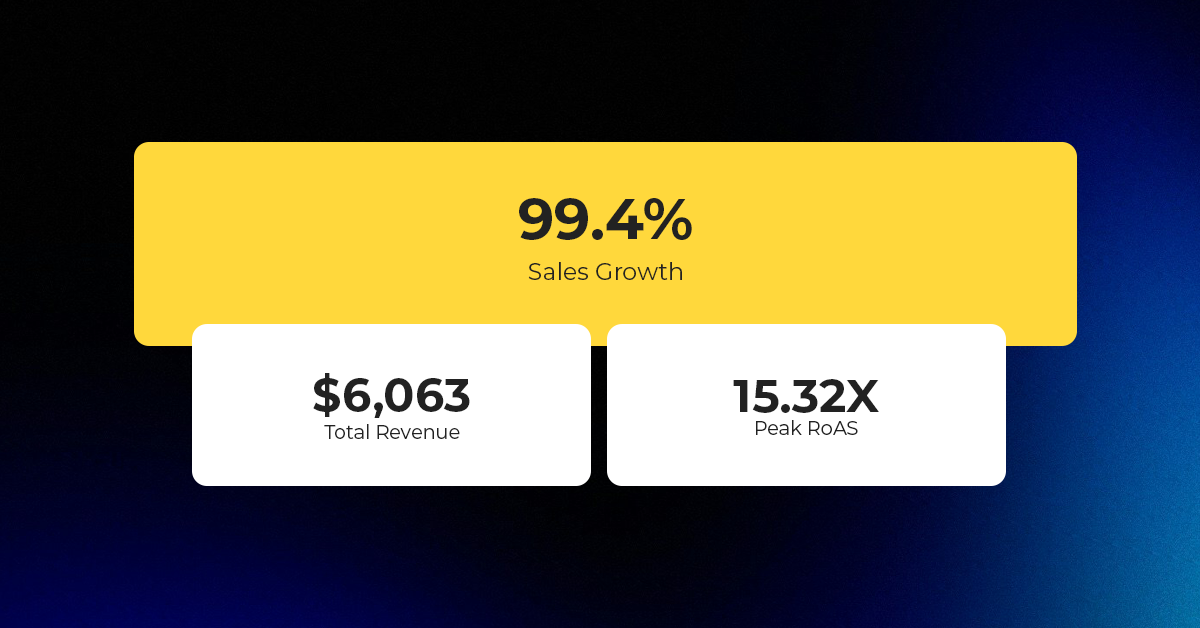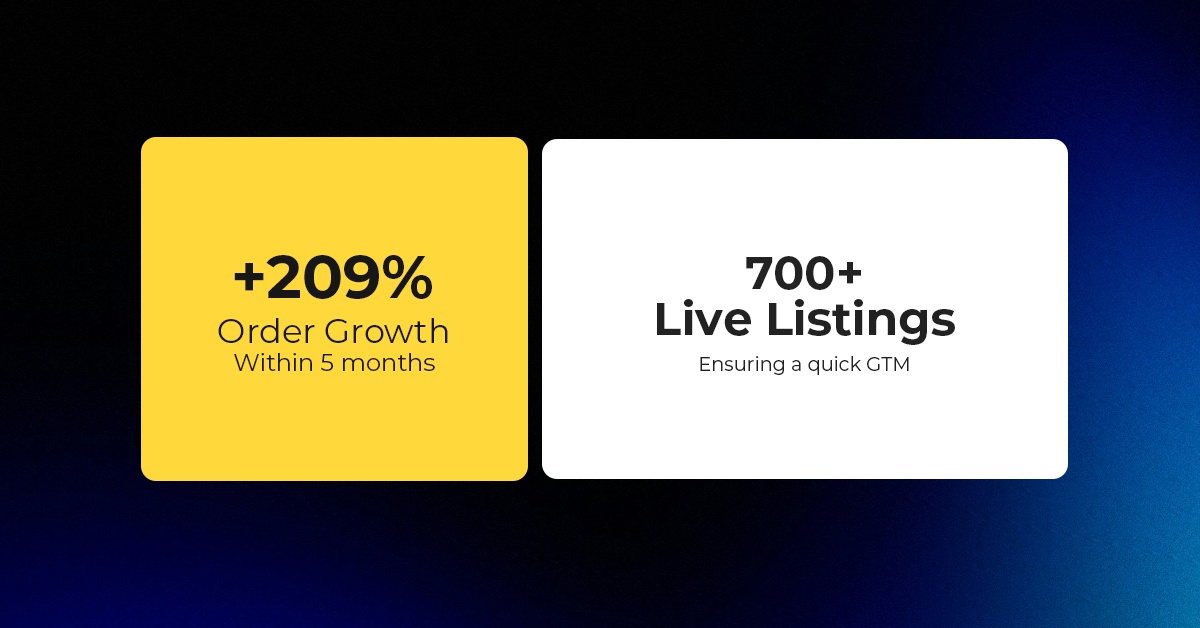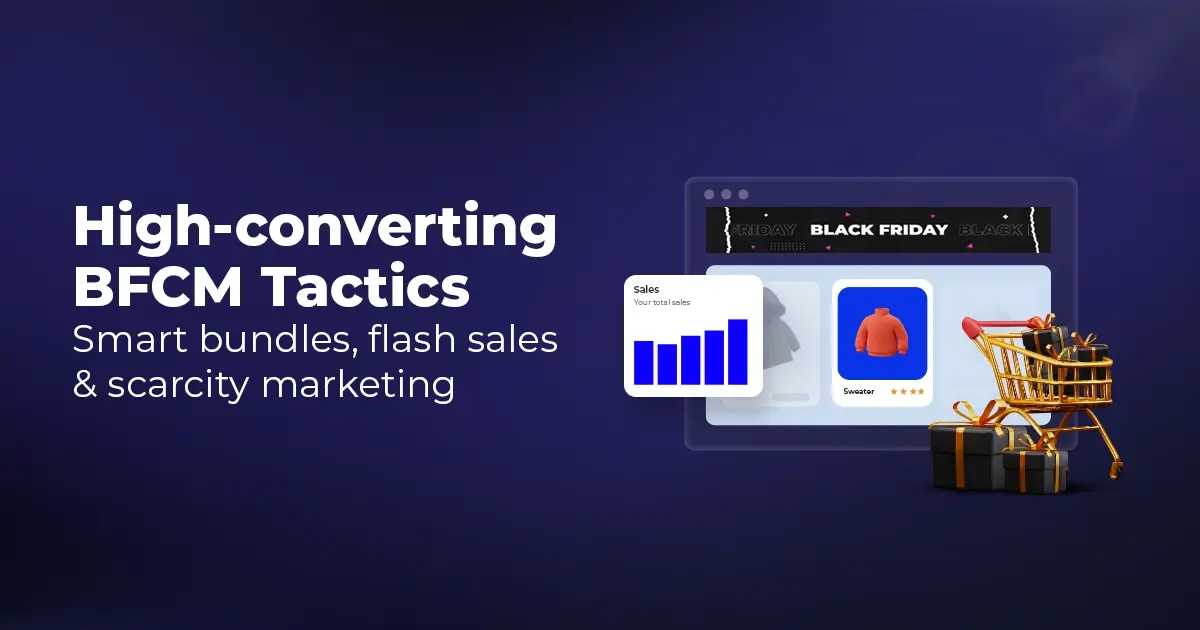TikTok Shop Raises Seller Fees Across Europe as Platform Pushes for ‘Content-Driven Commerce’ Expansion
Reading Time: 3 minutesTikTok Shop is raising its sales commission for merchants across five active…
The right choice of marketplace revenue model goes a long way in defining your marketplace’s growth and success. An online marketplace is a platform for facilitating monetary exchange between users. Furthermore, marketplace owners don’t hold inventory. Instead, online marketplaces serve as a medium for buying and selling goods. A successful marketplace business model facilitates transactions and other basic and advanced functionalities.
Several factors contribute to making online marketplaces superior to conventional online and physical stores. These reasons include a diverse product range, higher profitability, and greater growth potential with the ability to reach a wider audience. Moreover, online marketplaces eliminate the need to stock up on inventory, offer attractive product deals and offers, and more.
Let’s deep dive into the how and why the commission-based marketplace business model powers the most successful online marketplaces, including Airbnb, Amazon, eBay, Etsy, Uber, etc. Furthermore, explore the types of marketplaces and what types of marketplace revenue models are available.
Reimagine your Magento Marketplace with CedCommerce
A marketplace revenue model is a framework for running a marketplace, providing value to customers, and generating revenue. Your marketplace type significantly influences the choice of revenue model you adopt. The subscription model’s most common for digital product marketplaces. While the commission-only model is most common for rentals and physical product marketplaces.
The marketplace revenue model outlines the structure of selling, who to sell to, who to charge for the services offered, and how a marketplace can remain competitive in the industry. Marketplaces are just a medium, creating an online space for sellers to sell and buyers to buy. Thus, revenue models define an entirely new way of generating revenue.
Do you want to start your marketplace?
Despite the type of marketplace, the end goal remains the same. Eventually, third-party vendors offer a diverse range of products and services to a large number of buyers. Marketplaces can be categorized based on the target audience, core focus, industry, and other criteria. However, this article will only focus on horizontal and vertical marketplaces.
A horizontal marketplace business model acts as a one-stop-shop for all customer product requirements, with sellers selling all categories of products. Thus, horizontal marketplaces attract customers from all sectors. For instance, Amazon is one of the most popular horizontal marketplaces.
A vertical marketplace type target customers from a specific sector, selling particular niche products. You can go with a vertical marketplace if you wish to target a niche market. Furthermore, you can narrow down your catalog to specific products and services for specific customers for incorporating a vertical marketplace type. The following marketplaces are vertical marketplaces:
Also read: How to build trust of your new online marketplace?
In a commission-based marketplace revenue model, owners earn a share from each transaction processed on the marketplace. Owners can charge a commission at a fixed percentage or fixed flat fees. As a marketplace scales and the transactions it processes increase, owners can earn more commissions. Thus, commission-based marketplaces have become one of the most popular and lucrative marketplace business models.
The primary advantage of a successful marketplace business model running on commission is that merchants and buyers don’t have to pay before getting some value from using the marketplace. All parties can operate on the marketplace for free. Put simply, merchants have nothing to lose by bringing their business to the marketplace. Thus, they find the commission-based marketplaces extremely appealing.
Furthermore, marketplace owners also find commission-based marketplaces more profitable. Since they have the opportunity to earn a percentage or fixed fee out of every transaction exchanged between buyers and sellers.
Moving on to the next reason why the commission-based marketplace revenue model attracts more merchants. Merchants can focus on carrying out their business operations and increasing sales since marketplace owners handle payments and shipping.
However, a service marketplace charges lower commissions than physical product marketplaces. Though, commissions can be customized for every online marketplace type. Moreover, it might introduce different commission models across different product categories, based on their categories’ value to the marketplace and buyers. For instance, Amazon fixes commission rates based on the number of products sellers list on their online marketplace platform.
The well-known marketplaces running on a commission-based marketplace business model include the following:
Also read: Top online marketplace ideas for entrepreneurs in 2022
The commission-based marketplace revenue model seems to be the right and most attractive option for scaling your business. It decreases the friction for buyers to join the platform and eliminates the risk for sellers since they don’t have to pay until they make a sale.
Figuring how much commission you should charge from either sellers, buyers, or even both is tricky. However, there are no one-size-fits-all commission rates for all online marketplaces. The variation in commission rates can range from low to enormous. Moreover, sustainable commission rates should fall between maximizing profits and retaining sellers and buyers on the platform.
Here are some factors to consider while finalizing your commission structure:
A low take rate is often a reasonable strategy to create a sustainable and successful marketplace business model. Moreover, it’s safe to start with low commission rates and find more profitable rates for your marketplace without having cost-sensitive buyers and sellers stop using your marketplace. High commission rates can make acquiring users more challenging and decreases conversion rates. It can also open avenues for your competitors to enter the market.
Conduct an analysis of your competitor’s commission rates. Though, there’s no saying whether their commission rates structure might work for your marketplace. However, you can account for aspects that work and don’t work for your marketplace. Furthermore, you can use the analysis data as the starting point for forming your commission rates structure.
A service marketplace and physical product marketplace experience a difference in demand. Generally, low-cost and everyday items are purchased more during a short period. Thus, you can charge a commission at a higher rate on these products.
The cost of producing one additional unit of your products or services can affect your commission rates. Because too high commission rates will reduce the profit margin of sellers, encouraging them to discontinue using your marketplace.
Every marketplace revenue model has a drawback. Despite the commission model being a successful marketplace business model, pose some challenges to sellers and owners alike.
It happens when users don’t find much value in using your platform in addition to perceiving your commission rates as too high. Eventually, the users (sellers and buyers) find a way to go around your marketplace platform and deal with each other directly.
As the marketplace owner, you must decide the most ideal time to split commissions with the vendors. Will you split the commission weekly or monthly?
A commission-based marketplace revenue model generates low revenue when your marketplace is in the initial stage. When there are few users, fewer transactions are exchanged on the platform. Thus, you can’t earn more by way of commissions unless you get more users to your marketplace.
As discussed above, there are no shortcuts to adopting the perfect commission model. You have to determine the rates depending on your competitor’s analysis and consumer behavior. If you charge too much, you leave no profit for the sellers. If you charge too less, you might end up incurring losses. Furthermore, you have to determine whether you should charge a percentage of each transaction or flat fees. Thus, it’s one of the most significant challenges of the commission-based marketplace revenue model.
Deciding on a scalable marketplace business model and generating high profits is no easy task. In addition to generating profits, the revenue model must finance your business operations to build a successful marketplace business model. Selecting the wrong revenue model without proper market research and analysis leads to many startups failing and shutting down. Moreover, in most cases funding for your marketplace platform must come from the targeted users.
Now that you have learned much about the commission-based marketplace revenue model, let’s take a look at some of the other most common revenue models.
Also read: Top 7 ways to raise funds for marketplaces
On the membership marketplace business model, users have to pay a recurring fee for accessing the marketplace platform. The value proposition of the subscription-based marketplace model is that it enables merchants to find customers. You can consider opting for the subscription model if you offer a unique user experience and high value to customers. The subscription model is popular for digital product marketplaces. For instance, Netflix and Spotify.
Furthermore, the subscription model can be a good initial model for B2C marketplaces that eventually want to charge a commission. However, B2C marketplaces lack the tools in place to facilitate transactions in their particular niche.
Moreover, you must have enough users on your marketplace to make it valuable for both providers and customers. A mandatory payment often discourages users from signing up. You can get around this drawback by offering initial discounts for early users or even lifting the fee completely to build the initial user base and a successful marketplace business model.
In the listing fee model, providers have to pay every time they post new listings. Generally, the marketplace business model is used when providers get value based on the number of listings they offer. Furthermore, the potential value per listing is also big. Thus, the marketplace business model is quite common with classified ads. Classified ad platforms don’t facilitate transactions but guarantee visibility.
For instance, Craiglist. People on Craiglist can post listings about selling goods, services, jobs, finding an apartment, etc. Furthermore, Etsy, a B2C marketplace using the commission model, also charges a fee to post new listings.
Moreover, the listing fee model is better than the membership model in terms of users unwilling to continue the subscription and want to sell only a few items. However, a successful marketplace business model depending solely on listing fees requires a large volume of listings.
The lead fee model falls between the listing fee and commission model. Customers can post requests on the platform and providers pay to make a bid for these bids. Providers pay only when they are introduced to a potential customer.
The lead fee model proves sustainable only when the lead value is high. For instance, a B2C or B2B service marketplace where each lead creates a long-term customer relationship with multiple deals.
On a freemium marketplace model, the core offerings are free. Once the users are hooked to the platform, you can offer paid value-adding features. The only drawback of a freemium marketplace business model is that the additional features should be unique and tempting enough to get the users to pay for them.
Many marketplaces offer premium services as additional revenue streams since coming up with attractive and interesting premium functionalities can be tricky. Generally, marketplaces running on the freemium model face challenges while scaling and expanding their business operations.
Featured listings can get providers more visibility for their offerings. Moreover, listing on the platform is free. However, providers can pay to get their listings featured on the home page or at the top of a particular category.
Furthermore, featured listings and third-party ads are both popular revenue streams for classified ad platforms. Similar to the listing model, the featured listings and ads revenue model requires a significantly high amount of users to generate revenue. Moreover, when you display featured listings and ads on your platform, you cater to two different audiences.
For customers, ads often act as a hindrance. Thus, the ad-based marketplace revenue model works best for targeting a niche market and not when you wish to deliver an unparalleled user experience.
Getting to learn more about different marketplace revenue models emphasizes the benefits of the commission model. Against all odds, the commission-based model is your best bet for generating higher profits. Furthermore, it allows you to capitalize on each transaction processed on your marketplace platform.
Also read: The complete guide to starting your marketplace business
If you are planning to start your marketplace business, our B2B and B2C marketplace solutions can help you every step of the way. We’ve got it all covered from finalizing your marketplace platform requirements to launching an interactive website.
Learn more about how our marketplace solutions have helped you achieve success:

Reading Time: 3 minutesTikTok Shop is raising its sales commission for merchants across five active…

Reading Time: 11 minutesBy now you have seen your BFCM 2025 numbers. The harder question…

Reading Time: 3 minutesAbout the Brand Name: Vanity Slabs Inc Industry: Trading Slabs- Vanity Slabs…

Reading Time: 2 minutesAbout the Brand Name: Ramjet.com Industry: Automotive Parts & Accessories Location: United…

Reading Time: 2 minutesAmazon is rolling out strategic referral fee reductions across five major European…

Reading Time: 4 minutesQuick Summary: Scaling Lifestyle Powersports on eBay with CedCommerce Challenge: Zero marketplace…

Reading Time: 4 minutesTikTok has surpassed 460 million users across Southeast Asia, reinforcing its position…

Reading Time: 3 minuteseBay has released its final seller news update for 2025, with a…

Reading Time: 3 minutesAmazon has clarified its stance regarding speculation around a potential breakup between…

Reading Time: 4 minutesWalmart is accelerating its push into next-generation fulfillment by expanding its drone…

Reading Time: 4 minutesFaire, the fast-growing wholesale marketplace connecting independent retailers with emerging brands, has…

Reading Time: 4 minutesB2B buying in the United States is undergoing a fundamental behavioral shift…

Reading Time: 3 minutesSummary Cyber Monday 2025 has officially become the largest online shopping day…

Reading Time: 2 minutesSummary Amazon kicked off December with two major developments shaping the future…

Reading Time: 2 minutesSummary Walmart has entered December with two major moves that signal a…

Reading Time: 2 minutesBlack Friday 2025 delivered the strongest U.S. eCommerce performance in history, as…

Reading Time: 13 minutesStill approaching BFCM with generic discounts, last-minute price cuts, or scattered promotions?…

Reading Time: 3 minutesTikTok Shop reached a major milestone during its largest U.S. “Global Black…

Reading Time: 3 minutesOpenAI has announced a new AI-powered shopping research tool designed to help…

Reading Time: 9 minutesIf your TikTok Shop listings often sit in review or your visibility…
There is a mistake in the text above. Airbnb Commission model is not a 10% commission from the hosts and 3% from the travelers. Its 3% commission for the hosts and above 10% going up to 16% for travellers…
Hi Moritz,
Thanks for your suggestion. We will update it.
Leave a Reply